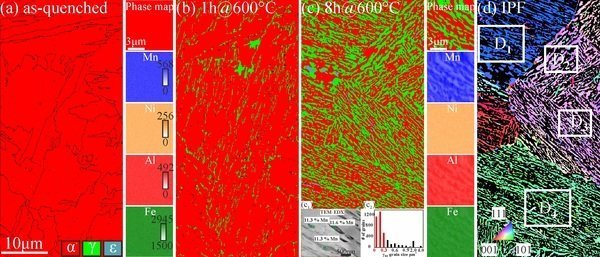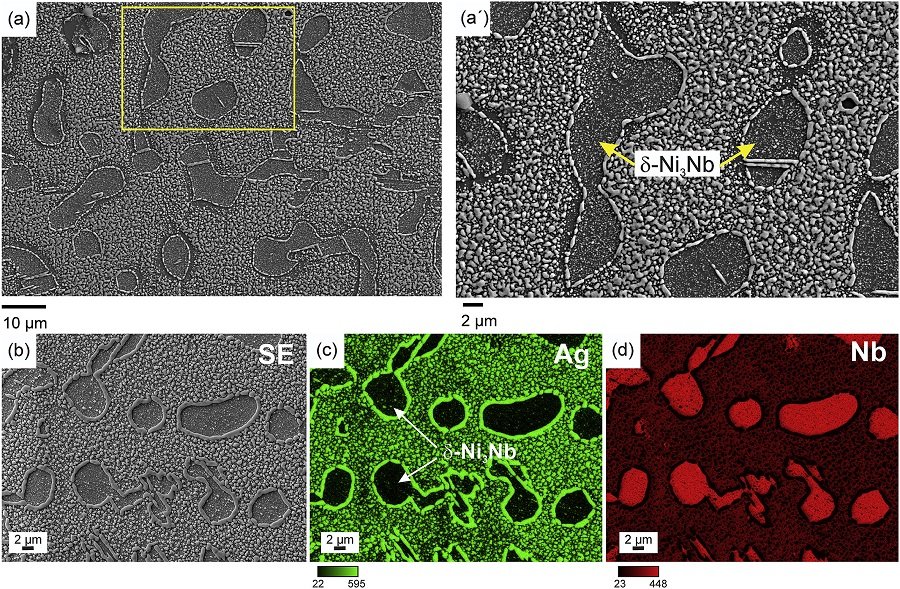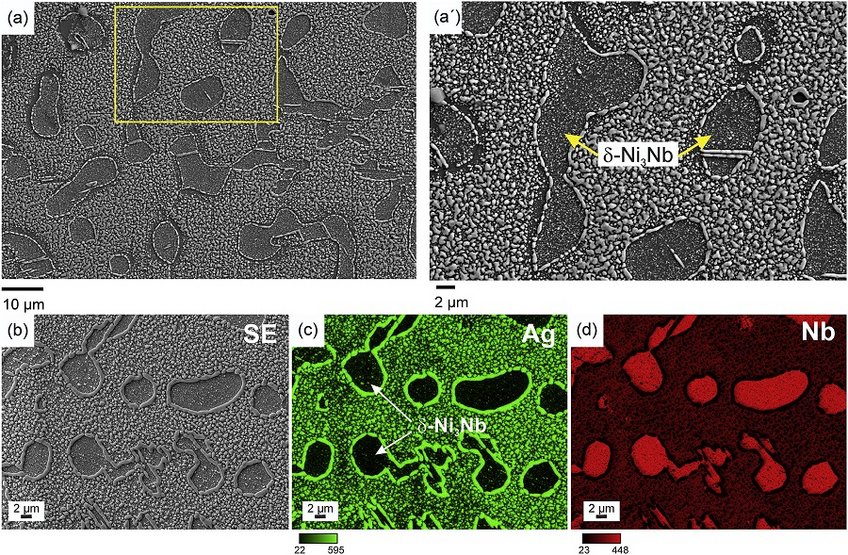
Study of hydrogen embrittlement by using multi-scale and spatially resolved hydrogen mapping in a Ni-Nb model alloy and in alloy 718
In this project we investigate the hydrogen distribution and desorption behavior in an electrochemically hydrogen-charged binary Ni-Nb model alloy. The aim is to study the role of the delta phase in hydrogen embrittlement of the Ni-base alloy 718.
We focus on two aspects, namely, (1) mapping the hydrogen distribution with spatial resolution enabling the observation of the relations between desorption profiles and desorption sites; and (2) correlating these observations with mechanical testing results to reveal the degradation mechanisms. The trapping states of hydrogen in the alloy were globally analyzed by Thermal Desorption Spectroscopy (TDS). Additionally, spatially resolved hydrogen mapping was conducted using silver decoration, Scanning Kelvin Probe Force Microscopy (SKPFM) and Secondary Ion Mass Spectrometry (SIMS): The Ag decoration method revealed rapid effusion of hydrogen at room temperature from the gamma-matrix. The corresponding kinetics was resolved in both, space and time by the SKPFM measurements. At room temperature the hydrogen release from the gamma-matrix steadily decreased until about 100 h and then was taken over by the delta phase from which the hydrogen was released much slower. For avoiding misinterpretation of hydrogen signals stemming from environmental effects we also charged specimens with deuterium. The deuterium distribution in the microstructure was studied by SIMS. The combined results reveal that hydrogen dissolves more preferably inside the gamma-matrix and is diffusible at room temperature while the d phase acts as a deeper trapping site for hydrogen. With this joint and spatially resolving approach we observed the microstructure- and time-dependent distribution and release rate of hydrogen with high spatial and temporal resolution. Correlating the obtained results with mechanical testing of the hydrogen-charged samples shows that hydrogen enhanced decohesion (HEDE) occurring at the delta/matrix interfaces promotes the embrittlement.

Specimen charged with hydrogen: (a) and (a0) SE images of the silver decorated surface, showing reduced Ag particles on the gamma-matrix. (b) SE image, (c) and (d) the corresponding EDX maps of the Ag decorated surface, confirming the precipitation of the Ag particles on the gamma-matrix, indicating the locations of the evading hydrogen flux. Each EDX map is color coded by the count frequency of the X-ray signal received by the EDX detector.
